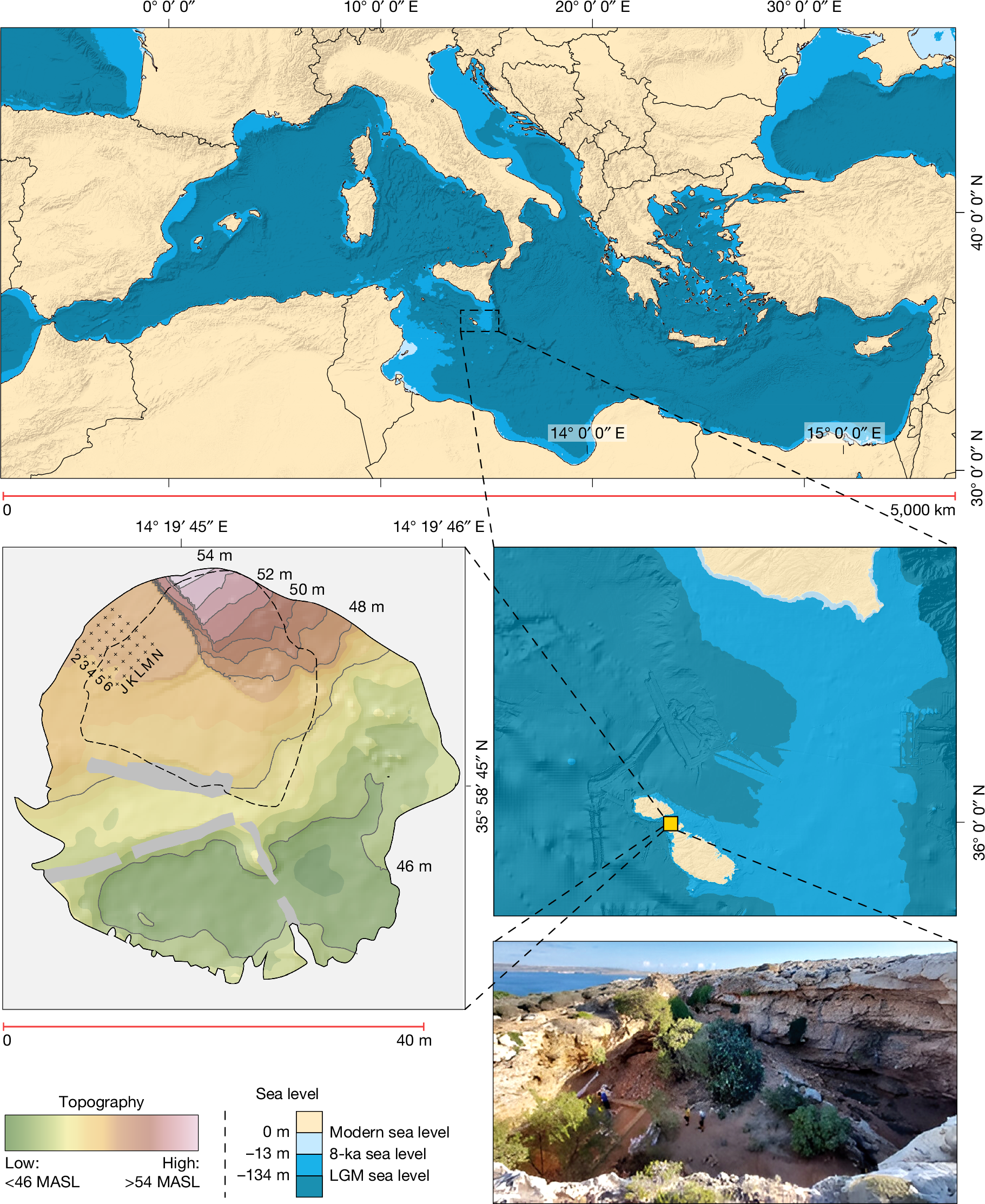2025-04-09 マックス・プランク研究所
<関連情報>
- https://www.mpg.de/24496805/0408-wisy-menschliche-anwesenheit-auf-malta-frueher-als-bisher-vermutet-9347732-x
- https://www.nature.com/articles/s41586-025-08780-y
狩猟採集民の航海は地中海の最も遠い島々まで及んだ Hunter-gatherer sea voyages extended to remotest Mediterranean islands
Eleanor M. L. Scerri,James Blinkhorn,Huw S. Groucutt,Mathew Stewart,Ian Candy,Ethel Allué,Aitor Burguet-Coca,Andrés Currás,W. Christopher Carleton,Susanne Lindauer,Robert Spengler,Kseniia Boxleitner,Gillian Asciak,Margherita Colucci,Ritienne Gauci,Amy Hatton,Johanna Kutowsky,Andreas Maier,Mario Mata-González,Nicolette Mifsud,Khady Niang,Patrick Roberts,Joshua de Giorgio,Rochelle Xerri & Nicholas C. Vella
Nature Published:09 April 2025
DOI:https://doi.org/10.1038/s41586-025-08780-y

Abstract
The Maltese archipelago is a small island chain that is among the most remote in the Mediterranean. Humans were not thought to have reached and inhabited such small and isolated islands until the regional shift to Neolithic lifeways, around 7.5 thousand years ago (ka)1. In the standard view, the limited resources and ecological vulnerabilities of small islands, coupled with the technological challenges of long-distance seafaring, meant that hunter-gatherers were either unable or unwilling to make these journeys2,3,4. Here we describe chronological, archaeological, faunal and botanical data that support the presence of Holocene hunter-gatherers on the Maltese islands. At this time, Malta’s geographical configuration and sea levels approximated those of the present day, necessitating seafaring distances of around 100 km from Sicily, the closest landmass. Occupations began at around 8.5 ka and are likely to have lasted until around 7.5 ka. These hunter-gatherers exploited land animals, but were also able to take advantage of marine resources and avifauna, helping to sustain these groups on a small island. Our discoveries document the longest yet-known hunter-gatherer sea crossings in the Mediterranean, raising the possibility of unknown, precocious connections across the wider region.


